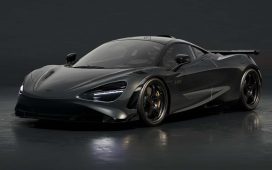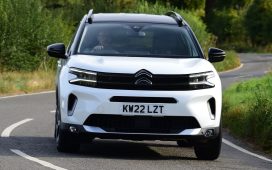
Source: Unsplash/Waldemar Brandt.
What if every light in your home along with your television, computer, smartphone, swimming pool and all cleaning, cooking and cooling appliances could be powered by one source?
And what if that source was the battery on wheels you parked in your garage each night?
That’s the question being investigated by energy regulators, suppliers and experts as they seek to tap into what’s been described as “the single biggest flexible — and as yet untapped — resource in Australia’s energy transition”.
The technology, dubbed vehicle-to-X, could see the powerful batteries inside electric cars used to store cheap or renewable electricity and feed it back into homes, buildings, appliances or the grid during peak demand.
Get daily business news.
The latest stories, funding information, and expert advice. Free to sign up.
A report from the Australian Renewable Energy Agency (ARENA) says the technology could become the nation’s biggest electricity storage opportunity in the next decade and has the potential to save consumers more than $6000 on the lifetime cost of charging an electric car.
But Australia’s growing electric fleet will have to overcome a series of speed bumps before reaching this potential, including introducing standards, approving hardware, and encouraging more automakers to support technology.
Sometimes referred to as bi-directional charging, the prospect of using cars for energy storage is an idea gaining attention around the world.
The technology falls into three categories: vehicle-to-grid in which cars export power back into the energy network, vehicle-to-home in which cars power a house or building, and vehicle-to-load where a car’s battery is used to run an appliance.
Smart Energy Council transport lead Audrey Quicke says enabling this technology in Australia could have enormous benefits for consumers and the power grid.
Electric cars could store huge amounts of power from solar energy, for example, and use vehicle-to-grid technology to put it to use.
“Electric vehicles offer massive, untapped storage potential,” she says.
“In 10 years, Australia’s electric car fleet is likely to have more battery capacity than Snowy 2.0 – that’s a whole lot of storage on wheels that is parked about 95% of the time.”
By 2050, according to ARENA’s latest report, electric cars in Australia will have almost four times the storage capacity needed for the National Electricity Market.
The study, called Opportunities and Challenges for Bi-directional Charging in Australia, also found the technology could deliver significant savings for drivers.
Modelling found vehicle-to-grid technology could cut more than $6000 from the cost of charging an electric car over 10 years.
The greatest savings could be unlocked by drivers in South Australia and NSW, the report found, while those in Queensland and the ACT could access smaller discounts of more than $1000 over a decade.
But vehicle-to-grid technology is still early in its development.
More than 170 V2G trials have been held worldwide, including two in Australia: one in Canberra using 51 Nissan Leaf vehicles, and another at Flinders University in Adelaide involving 10 public chargers that can use car batteries to power the campus.
But the technology is only approved for consumer use in South Australia so far, with SA Power Networks launching bi-directional chargers early this year.
Its biggest hurdle, Umair Afzal from the Electric Vehicle Council says, is an out-of-date standard governing electricity exports.
Afzal, a doctoral researcher at Swinburne University, is one of several experts consulting with energy networks, car makers and hardware manufacturers on a new AS/NZS4777 standard to support V2G technology that could be ready in 2024.
“We’re expecting to have public comment drafts of both parts of the standard out later in the year,” he says.
“We expect that all states and territories will adopt the new version of the standard in their regulations, which will mean (vehicle-to-grid) will no longer be limited to South Australia.”
Another challenge, Electric Vehicle Council energy and infrastructure head Ross De Rango says, is the number of cars designed to feed power into the grid.
Two car brands offer V2G features in Australia – Nissan and Mitsubishi – though more manufacturers have announced support for the technology and plans to deliver it in future models.
They include Polestar, Cupra, Audi, Volkswagen, Skoda and Kia, according to ARENA’s report and, since that report’s release, another three car makers have announced their support.
“We’re expecting that this trend will continue and that we’ll start seeing significant numbers of V2G-capable electric cars from a wider range of manufacturers entering the Australian market in 2024,” De Rango says.
More car makers are adding support for vehicle-to-load technology, including MG, Hyundai, BYD and Volvo, that lets drivers power an appliance using their car.
Swinburne University future urban mobility professor Hussein Dia says the technology was a practical way to get more out of a car’s battery, whether used at home or away.
“I’ve seen some cases where instead of taking a generator camping, they’re plugging their devices into their car,” he says.
“There’s also the potential to use this in the house if electricity prices are very high.”
Professor Dia says the potential of using electric vehicle batteries for storage was still not widely recognised in Australia but that will change when its savings can be demonstrated.
“Some people might think of this technology as a secondary benefit (of electric cars) but if it can reduce electricity costs it should be welcomed,” he says.
“It hasn’t received a lot of attention but it should.”
This article was first published by AAP.
Handpicked for you

The next generation of electric vehicles is here, and they cost less than $40,000
The MG4, with its entry model costing $38,990, will be the second-cheapest electric vehicle on the market.

MYOB update means up to 250,000 workers could get cheaper electric cars
More than 30 electric cars qualify for the discount, including models from Tesla, BYD, MG, Hyundai and Kia.










